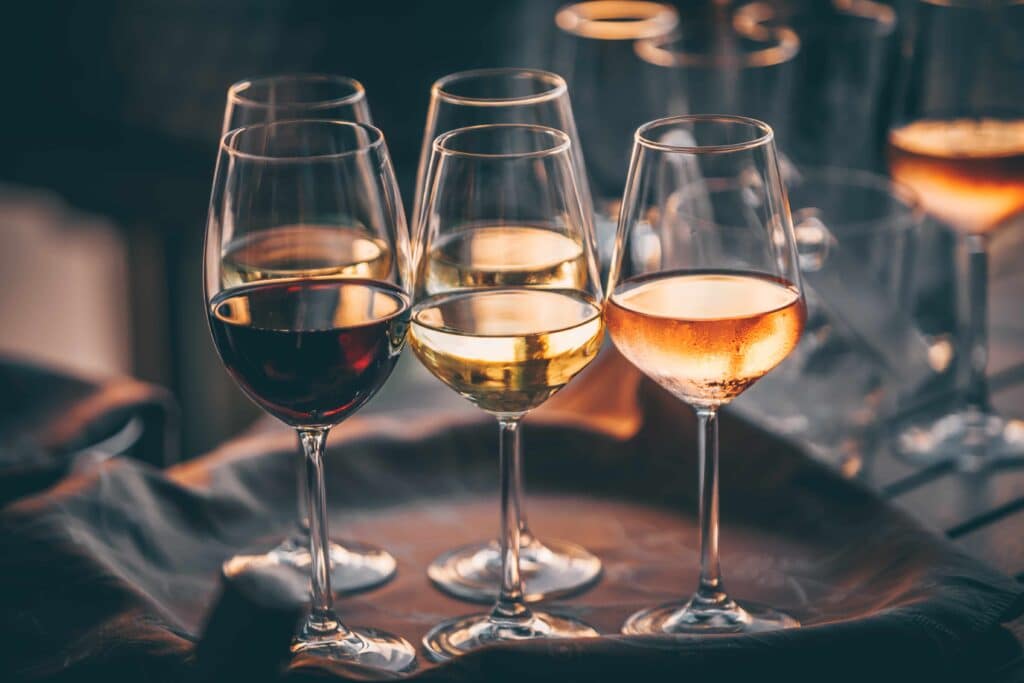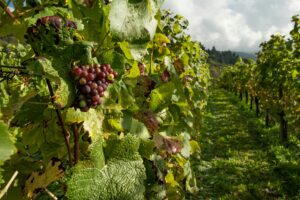Drinking wine often seems a far more sophisticated affair than sipping a pint of your local artisan brewed ale. Still, with good reason, fine wines are created using historical expertise and century old traditions, and they often cost a considerable amount in comparison for this reason.
Because of the way wines are made, they also include more alcohol than your average drink. As we are advocates of enjoying fine wines and drinking responsibly, we thought we’d share with you all about the alcohol percentage in wines and how winemaking impacts these differences.
Red, White and Rosé Wine Are Not Created Equal
As grapes mature on the vines, they develop a greater sugar content, increasing until they’re picked. When the grapes are left to ferment, the sugar is converted to alcohol by the yeasts, increasing the longer the grapes are left to mature. Climate plays a big part in how much sugar content there is in wines and, therefore, how much alcohol is contained in each bottle.
The degree of alcohol in any glass of wine is equivalent to its percentage by volume, so it is referred to as ‘ABV’ (alcohol by volume).
Low Alcohol Percentage Wines
Wines considered low alcohol would probably seem fairly standard to many, but under 12.5% is officially classed as low alcohol percentage in wines.
On average, a standard glass of wine will contain around 11 to 13 alcohol percentages but wines can be 5% or even as low as 0.1%. Wines this low in alcohol have been a challenge to enjoy for serious wine connoisseurs looking to reduce their alcohol intake, but some progress is being made by winemakers looking to target the ‘go sober’ and wellness market.
Wines that naturally contain a lower alcohol percentage include many fruity whites, some rosés, sparkling wines such as Prosecco and Asti.
Medium Alcohol Percentage Wines
Medium wines tend to range from 12.5 to 13.5%, and this is where most dry white and dry reds will fall in the range. This range is in an exceptional class because it houses many European rosés, French Bordeaux and Burgundy, Beaujolais and Italian Chianti. A good New Zealand Sauvignon Blanc and Italian Pinot Grigio would also feature in this alcohol percentage range.
Medium High Alcohol Percentage Wines
In more recent years, demand has become high for bolder and more complex wines, so winemakers have been leaving grapes to ripen for longer on the vines, which, of course, results in higher alcohol content too. Wines grown in a warmer climate also produce sweeter grapes, resulting in wines such as Chardonnay, Sauternes, Sauvignon Blanc and Shiraz, Pinot Noir and Barolo from regions such as California and places like Australia, Chile and Argentina.
High Alcohol Percentage Wines
This level of alcohol content is usually found in wines known to be ‘fortified’, which means adding distilled grape brandy to increase the alcohol percentage of the drink. Think your festive tipple of Spanish sherry or your after dinner sip of port with cheese and crackers, or your Portuguese Madeira with a decadent dessert. All fine examples of high alcohol content drinks that are meant to be savoured rather than quaffed.
Wine is endlessly fascinating, and we do hope you have enjoyed discovering all about the alcohol percentage of wines, cheers.







